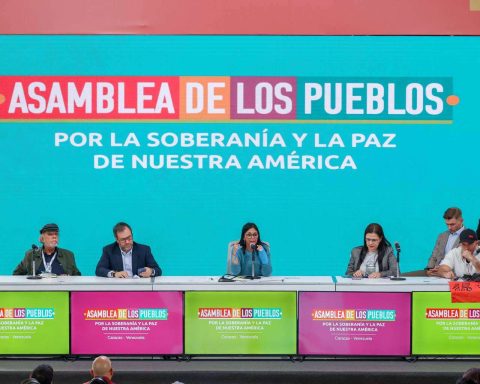The agreement reached by the Argentine Government with the International Monetary Fund (IMF) has as its main axes the search for sustainable and inclusive growth over time, the fight against inflation, the achievement of exchange rate stability, the reduction of monetary financing, price and income policies, the reduction of the fiscal deficit, the subsidies that are allocated to the rates of the energy sector and the promotion of exports, investment and productivity.
From the Palacio de Hacienda they stressed that the understanding recognizes the importance of “promote growth and resilience policies” to address “long-term bottlenecks” and lay the foundations for “more sustainable and inclusive growth” over time.
These policies will try to “promote the growth and diversification of exports; investment and productivity; local and regional economic development; formal employment and labor inclusion that includes a gender perspective; improvements in the efficiency and sustainability of the sector energy; environmental mitigation and adaptation policies; and the broader development of capital markets,” it was stated.
Inflation and exchange rate
It was also agreed that inflation is a “multi-causal phenomenon” that must be approached from a “comprehensive approach” and that the necessary condition to consolidate disinflation is to maintain a “reserve accumulation process.”
Therefore, the program reinforces the commitment to “exchange stability”, ruling out sudden movements and establishing that the exchange administration will seek to ensure the medium-term compatibility of the real exchange rate with the objective of reserve accumulation.
At the same time, progress will be made in a “progressive fiscal consolidation” that reduces the fiscal deficit, within the framework of the “recovery of economic activity” and a “gradual reduction of monetary financing” of the same, as well as a framework of implementation of monetary policy that results in “positive real interest rates” to strengthen the demand for assets in pesos.

Prices and rates
This process will also be accompanied by “price and income policies” that will contribute to “anchoring expectations in pursuit of gradual disinflation” together with a continuation of the “recovery of real income.”
In order to achieve tariff levels for public gas and electricity services that are “reasonable and likely” to be applied with “justice and distributive equity criteria”, it contemplates a “subsidy segmentation” scheme that focuses the efforts of the National State on those users vulnerable and less able to pay.
In addition, a “medium-term energy plan” will be developed to encourage private and public investment to increase energy generation and transmission, reduce losses in the distribution segment, improve energy consumption efficiency and resource conservation. , strengthen the targeting and progressivity of energy subsidies and ensure that rates reflect costs.
The understanding, closed by President Alberto Fernández and the Minister of Economy, Martín Guzmán, will be submitted to Congress in the next few hours and will include as annexes all the documents that make up the agreement, that is, the Memorandum of Economic and Financial Policies and the Memorandum of Technical Understanding, the Treasury Palace said in a statement.
From the Palacio de Hacienda they specified that the initiative – which is entitled “Agreement for the Refinancing of the Debt between the Argentine Republic and the International Monetary Fund”, will enter Parliament under the terms of Law 27,612 on Strengthening the Sustainability of the Public Debt -promoted by the National Government- which establishes that, among others, that any program carried out with the multilateral organization will require a Law of Parliament that expressly approves it.

















